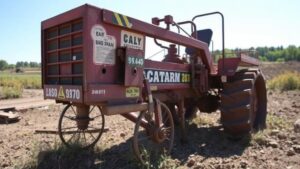Tracing Historical Soap Making Facilities for Early Chemical Industry Tools
Tracing Historical Soap Making Facilities for Early Chemical Industry Tools
The history of soap making dates back to ancient civilizations, where it served as both a cleansing agent and a symbol of status. An exploration of historical soap making facilities can shed light on the development of early chemical industry tools, highlighting significant advancements in both chemistry and manufacturing processes. This article examines notable soap making facilities, methodologies used in their production, and the impact of these early industries on modern chemistry.
Historical Overview of Soap Making
Soap-making is believed to have originated around 2800 B.C. in ancient Babylon, where a tablet containing a soap recipe was discovered. The recipe indicated the use of water, alkali, and cassia oil for the production of a cleaning agent. By the 1st century A.D., the Romans further advanced soap-making techniques, utilizing animal fats and wood ashes to create a more refined product. Historical evidence suggests that soap was not widely used until the 18th century, when it became essential for hygiene during the Industrial Revolution.
Early Soap Making Facilities
The significant transition from artisanal soap making to industrial production occurred in the late 18th and early 19th centuries. Facilities known for their early soap production include:
- P&G (Procter & Gamble): Founded in 1837, P&G pioneered mass production techniques for soap, particularly with the introduction of Ivory soap in 1882.
- Lever Brothers: Established in 1885, Lever Brothers became known for its successful marketing of Sunlight soap, which utilized a unique saponification process.
- Carters of London: Starting in the 1700s, Carters was notable for producing high-quality soaps that gained popularity among the affluent classes.
Technological Advances and Chemical Processes
The evolution of soap making was intricately linked to advancements in chemistry. The introduction of saponification, a chemical reaction between an acid (commonly fat or oil) and a base (like lye), laid the groundwork for modern soap production. Industrial soap makers began to implement more efficient manufacturing processes:
- Batch Processing: This method revolutionized the way soap was produced, involving the mixing of ingredients in large quantities and allowing for the production of consistent quality products.
- Continuous Process Techniques: Emerging in the early 20th century, this approach allowed for uninterrupted soap production, significantly increasing output and efficiency.
Impact on the Chemical Industry
The soap making industry played a foundational role in the development of the chemical industry. The need for effective surfactants led to innovations in the use of synthetic chemical compounds. Notably, the introduction of synthetic detergents in the 1930s revolutionized cleaning products and paved the way for modern laundry and household cleaners.
According to a report by Statista, the global market for soap in 2020 reached approximately 22.48 billion U.S. dollars and is expected to grow steadily in the upcoming years. This growth is largely attributed to increased awareness of personal hygiene, particularly in the wake of the COVID-19 pandemic.
Conclusion
The study of historical soap making facilities not only reveals the evolution of this essential product but also underscores its significance in the advancement of the chemical industry. Early soap makers laid the groundwork for modern manufacturing techniques, paving the way for innovations that continue to shape the market today.
Future research in this area could further explore how the chemical processes developed in soap making have influenced other industries, including cosmetics and pharmaceuticals. Also, the historical context provided by these facilities can help in understanding the socio-economic factors that have shaped the production and consumption of soap over centuries.



